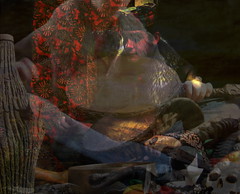The Sacred Traditions of the Andean Culture of Peru
The rich and powerful spiritual legacy of the Andean civilization is only now being properly recognised after 500 years of obscurity. This article takes a look at some of these traditions. Howard G Charing and Peter Cloudsley hold Retreat programmes in the Andes and Amazon where we work with many of the traditional shamans and healers.
The Mesa Nortena is a particular ceremonial tradition best conserved in the region of ‘Las Huaringas’, high and remote sacred lakes in the northern Department of Piura.
There are probably only a few good maestros who continue this ancient tradition in Peru today. The rest simply work with the externalities of the mesa, while giving their clients minimal doses of the visionary San Pedro cactus. Originally more importance was given to the medicine, which must be in the organism of the participants as well as the maestro for the power to flow. The mesa then served to intensify the power of the plant.
An altered state is needed to enter the symbolic world of the objects on the mesa (the word refers to the altar as well as the ceremony itself). The abundance of macerated plants, perfumes and smells employed in the mesa function to move the feelings associated with one’s memories. At a deep level, sensations are translated into vibrations which the medicine brings to consciousness so that associated hurt and pain can be ‘re-membered’ again and a new attitude can emerge.
The singado, or absorption of macerated tobacco juice through the nostrils involves another power medicine which is used to intensify the San Pedro at regular intervals. The instruction from the maestro to pour up the left or right nostril reflects the
